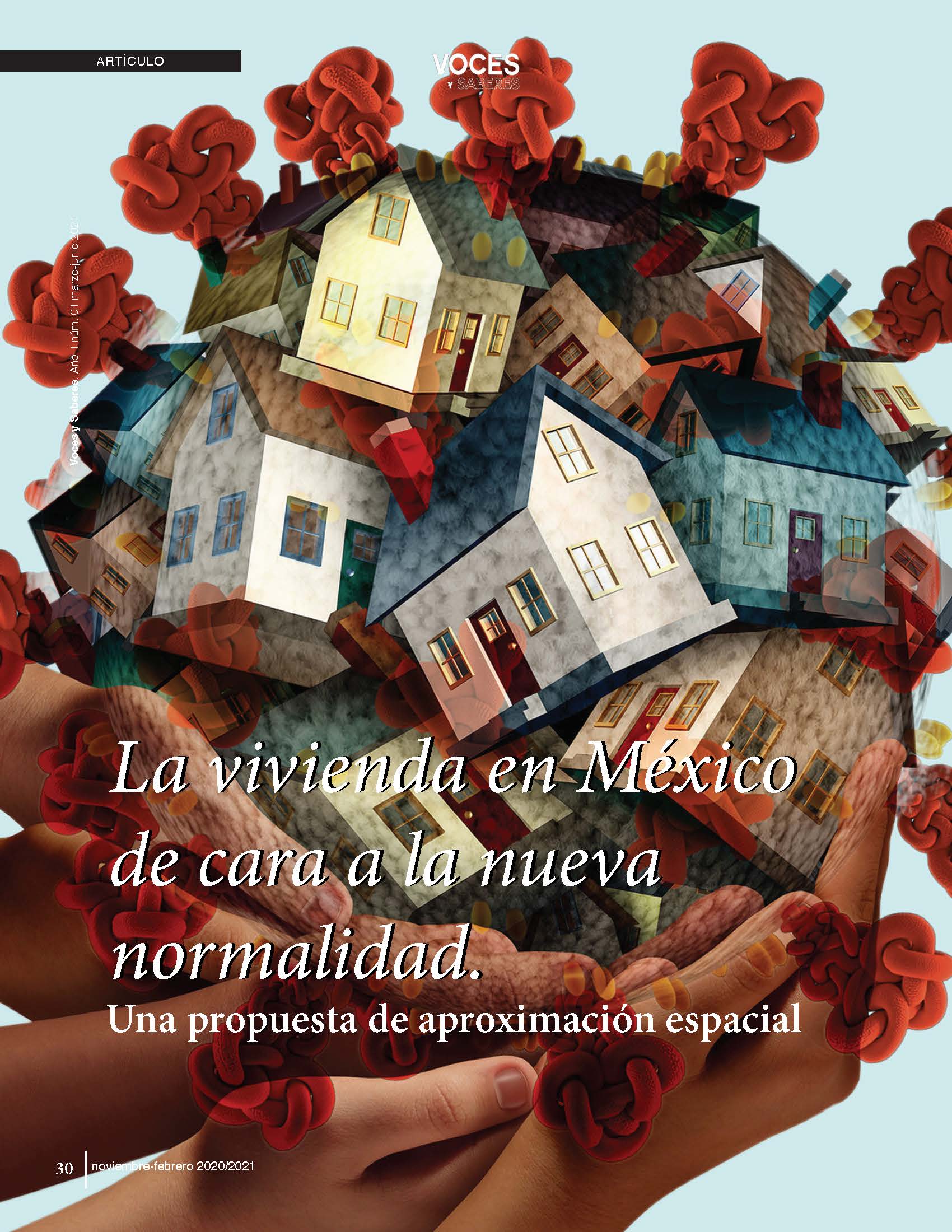Housing in Mexico in the face of the new normal. An approximate spatial proposal
DOI:
https://doi.org/10.22201/fesa.vocesysaberes.2021.1.8Keywords:
Pandemic, New normal, COVID-19Abstract
The pandemic caused by the SARS-CoV-2 virus brought with it strong consequences in all areas of contemporary life. Under the slogan "stay home", on March 31, 2020, the National Health Emergency began in Mexico and all non-essential activities in the public and private sectors were suspended. Thus began one of the greatest health and social crises of recent times. Suddenly, domestic spaces around the world transformed their uses and meanings; the house was put to the test and became the new operations center. This work analyzes the spatial implications derived from the pandemic, by exploring the responses generated by psychology, risk management, information technology and the educational sector to the situation; conceives housing as a product of its inhabitants and concludes with a typological housing proposal that could solve some of the requirements of the so-called "new normality".
References
Comisión Nacional de la Vivienda (CONAVI). (2010). Código de Edificación de Vivienda. Ciudad de México: CONAVI.
Gordillo, F. (enero-diciembre, 2004). Hábitat transitorio y vivienda para emergencias, Tabula Rasa.Recuperado de https://www.redalyc.org/articulo.oa?id=396/39600209
Gordillo, F. (2016). Hábitat transitorio o reciclado. Santo Tomás, Colombia. Recuperado de https://www.academia.edu/32141713/H%C3%81BITAT_TRANSITORIO_O_RECICLADO
Organización Mundial de la Salud (OMS). (2018). Directrices de la OMS sobre Vivienda y Salud. Ginebra, Suiza: Organización Mundial de la Salud.
Organización Mundial de la Salud (OMS). (2019). Preguntas y respuestas sobre la enfermedad por coronavirus (COVID-19). Recuperado de https://www.who.int/es/emergencies/diseases/novel-coronavirus-2019/advice-for-public/q-a-coronaviruses?gclid=Cj0KCQjwn7j2BRDrARIsAHJkxmyhdLVIXUp5jI6Y_rq-F0MrNHUlhb81tKoc7Nr8G706NAGnXqa4LJYaAk8DEALw_wcB
Portal de gestión educativa, Provincia de Santa Fé. (mayo, 2020). Recuperado de Campus Educativo, ministerio de educación: https://campuseducativo.santafe.edu.ar/historia-letras-musica-y-pandemia/
Santa María, R. (mayo, 2020). La importancia de la vivienda para el cuidado de la salud en el Perú, en el marco de la pandemia COVID-19. Repositorio de la Universidad Ricardo Palma. Recuperado de http://repositorio.urp.edu.pe/bitstream/handle/URP/3036/Articulo-DirectricesVivienda-OMS-COVID-19-SantaMaria-.pdf?sequence=1
United Nations Disaster Relief Organization (UNDRO). (1992). An overview of Disaster Management. New York, NY: UNDRO.
Organización de las Naciones Unidas para la Educación, la Ciencia y la Cultura (UNESCO). (mayo, 2020). Coalición Mundial para la Educación COVID-19. Recuperado de https://es.unesco.org/covid19/globaleducationcoalition
Wilches-Chaux, G. (1995). Desastres y medio ambiente. Programa de entrenamiento para el manejo de desastres. Nueva York, NY: PNUD-DHA.

Downloads
Published
How to Cite
Issue
Section
License

This work is licensed under a Creative Commons Attribution-NonCommercial-NoDerivatives 4.0 International License.




